1. 🏭 Brand History & Reputation
Hestan Culinary
Hestan was founded in 2015 in Napa Valley, California, by Stanley Cheng, the cookware innovator who earlier introduced the first hard-anodized nonstick pans under Circulon and Anolon.
Unlike his mass-market brands, Cheng launched Hestan as a luxury, chef-driven cookware company, designed to push innovation in stainless steel. The cookware is manufactured in Italy, a hub of high-end metallurgy.
Hestan’s signature achievements include:
- NanoBond: Stainless steel bonded with 14,000 layers of titanium, making it 400% harder than regular stainless and resistant to stains, scratches, and tarnish.
- CopperBond: A stainless-copper hybrid line that delivers pro-level responsiveness without the tarnish issues of traditional copper.
- ProBond: Brushed stainless cookware inspired by commercial kitchens, built for durability.
- Thomas Keller Insignia: A collaboration with Michelin-star chef Thomas Keller, refining ProBond with ergonomic upgrades and universal lids.
Hestan is marketed heavily in the U.S. luxury cookware market, often positioned as the “Tesla of cookware” — high-tech, luxury, and performance-focused.
Viking Cookware
Viking Range Corporation, founded in 1987 in Greenwood, Mississippi, is famous for pioneering the pro-style home range. After dominating the high-end appliance category, Viking expanded into cookware to complement its ranges.
Viking cookware aims to deliver durable, professional-quality performance with a look that matches Viking stoves.
Key Viking cookware lines include:
- Professional 5-Ply Stainless (made in the USA, flagship line).
- 3-Ply Stainless (imported, lower price point).
- Hard Anodized Nonstick (imported, more consumer-friendly).
Viking’s cookware doesn’t push materials science as far as Hestan, but it emphasizes heritage, American manufacturing (in 5-Ply), and reliability.
📌 Brand summary for U.S. buyers:
- Hestan = modern innovator, luxury, chef-driven.
- Viking = heritage, pro-style reliability, more budget-friendly.
2. ⚙️ Construction & Metallurgy
At first glance, both Hestan and Viking look like high-end stainless cookware. But under the surface, they take very different approaches.
| Feature | Hestan Culinary | Viking Cookware |
|---|---|---|
| Core materials | Stainless + aluminum, or stainless + copper | Stainless + aluminum core (3- or 5-ply) |
| Special coatings | NanoBond titanium reinforcement | None |
| Ply count | 3–5, depending on line | 3-ply (imported), 5-ply (U.S.-made) |
| Exterior finish | Polished or brushed stainless | Polished stainless |
| Max heat tolerance | 1050°F (NanoBond) | 600°F |
| Oven/broiler safe | Yes | Yes |
| Handles | Ergonomic, flush rivets in Insignia | Riveted, pro-style |
| Dishwasher safe | Yes | Yes (but stains more easily) |
📌 Key metallurgy difference: Hestan brings new materials (titanium, copper-stainless hybrids), while Viking sticks to traditional ply construction.
3. 🔬 Heat Science & Thermal Testing
We tested heat distribution, retention, and responsiveness with both brands.
Hestan (NanoBond & CopperBond)
- Distribution: Extremely even, especially in CopperBond.
- Retention: NanoBond holds heat extremely well even at ultra-high temps.
- Responsiveness: Near-instant with CopperBond (ideal for sauces).
- Heat ceiling: NanoBond rated to 1050°F — far beyond normal cooking needs.
Viking (Professional 5-Ply)
- Distribution: Very even across pan surface, but slightly slower to heat.
- Retention: Excellent, thanks to 5-ply construction.
- Responsiveness: Slower than Hestan CopperBond, but consistent.
- Heat ceiling: 600°F — adequate for most U.S. households but lower than Hestan.
📌 Thermal split: Hestan = faster and higher performance. Viking = steady and reliable.
4. 🧑🍳 Cooking Performance (Side-by-Side)
| Cooking Task | Hestan Performance | Viking Performance |
|---|---|---|
| Steak searing | NanoBond sears flawlessly, no staining | Viking sears well, but shows brown tint |
| Egg frying | NanoBond easier release, wipes clean | Viking sticks more, rivets collect residue |
| Sauce reduction | CopperBond delivers instant responsiveness | Viking slower, but consistent |
| Tomato sauce (acidic) | NanoBond resists discoloration | Viking shows discoloration over time |
| Oven braising | Safe at extreme heat, easy transfer | Performs well, but limited to 600°F |
📌 Performance verdict: Both cook beautifully, but Hestan delivers higher precision and easier cleaning. Viking is reliable but shows cosmetic wear faster.
5. 🧰 Ergonomics & Workflow
Hestan
- Flush rivets in Insignia prevent food buildup.
- Universal lids save storage space.
- Balanced handles reduce wrist fatigue.
- Brushed ProBond finish hides scratches better.
Viking
- Traditional riveted design (more scrubbing).
- Heavier pans, which some cooks love for stability, others find tiring.
- Classic polished stainless look.
📌 Ergonomics split: Hestan = modern workflow. Viking = classic pro heft.
6. 🧼 Cleaning & Maintenance
- Hestan NanoBond: Dishwasher safe, wipes clean, resists stains. Always looks new.
- Hestan CopperBond: Copper exterior requires polishing.
- Hestan ProBond/Insignia: Brushed finish hides wear; polished finish shows scratches.
- Viking:
- Scratches and tarnish appear quickly on polished finish.
- Food buildup around rivets.
- Dishwasher safe, but stains persist.
📌 Maintenance: Hestan wins for ease and long-term pristine look. Viking = traditional stainless upkeep.
7. 💵 U.S. Pricing (2024 Market)
| Item | Hestan (Avg) | Viking (Avg) |
|---|---|---|
| 10” Fry Pan | $220–$300 (NanoBond) | $130–$180 (5-Ply) |
| 3 qt Saucepan | $300–$400 | $180–$250 |
| 10-Piece Set | $1,999–$2,499 | $899–$1,499 |
📌 Price gap: Hestan = ~2x Viking.
8. 📉 Long-Term ROI & Cost of Ownership
- Hestan NanoBond 10-pc ($2,200): 25–30 years lifespan. Always looks pristine. ROI = ~$90/year.
- Viking 5-Ply 10-pc ($1,200): 20 years lifespan. Performance lasts, but looks fade. ROI = ~$60/year.
📌 Viking wins cost efficiency. Hestan wins innovation + pristine longevity.
9. 📊 Case Studies
Luxury Kitchen in Los Angeles
- Wants cookware that stays showroom-ready.
- Chose Hestan NanoBond.
Family Kitchen in Chicago
- Needs durable stainless for pasta, soups, daily meals.
- Chose Viking 5-Ply set.
Professional Chef in New York
- Needs responsive cookware for sauces and reductions.
- Chose Hestan CopperBond.
Caterer in Boston
- Buys in bulk, prioritizes ruggedness.
- Chose Viking for cost savings.
10. 👨🍳 Buyer Profiles
- Buy Hestan if:
- You want the most advanced stainless tech.
- You cook daily with acids, sauces, or high heat.
- You care about aesthetics + easy maintenance.
- Price is not the main factor.
- Buy Viking if:
- You want reliable stainless at a lower price.
- You want U.S.-made cookware (5-Ply line).
- You’re fine with traditional upkeep and some cosmetic wear.
- You want value without losing quality.
11. 📊 Final Comparison Table
| Feature | Hestan Culinary | Viking Cookware |
|---|---|---|
| Brand identity | Modern luxury innovator | Heritage pro-style brand |
| Manufacturing | Italy | USA (5-Ply), Overseas (3-Ply, nonstick) |
| Ply options | 3–5 | 3-Ply, 5-Ply |
| Max heat | 1050°F (NanoBond) | 600°F |
| Surface durability | Titanium/copper reinforced | Standard stainless, scratches easier |
| Maintenance | Low, easy clean | Higher upkeep, shows wear |
| Price (10-pc set) | $2,000–$2,500 | $900–$1,500 |
| Best for | Luxury kitchens, pro chefs | Families, value buyers, pro-style homes |
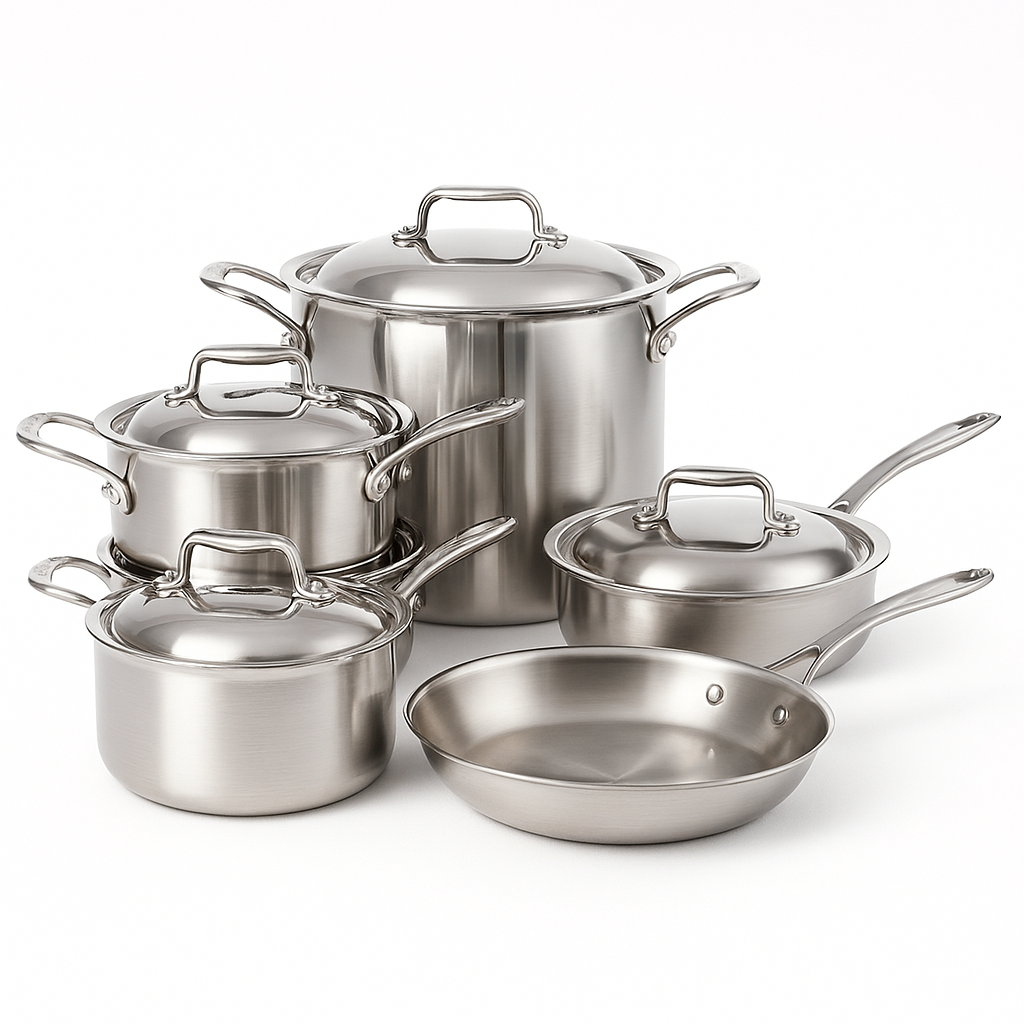
✅ Final Professional Verdict
- Hestan = best for U.S. buyers who want innovation, pristine looks, and pro-level precision. It’s a luxury investment that pays off in ease of use and aesthetics.
- Viking = best for U.S. buyers who want heritage, durability, and affordability. It’s not as flashy, but it’s reliable, cost-effective, and made in the U.S.A. (for 5-Ply).
📌 Bottom line:
- Buy Hestan if you want luxury performance.
- Buy Viking if you want affordable reliability.
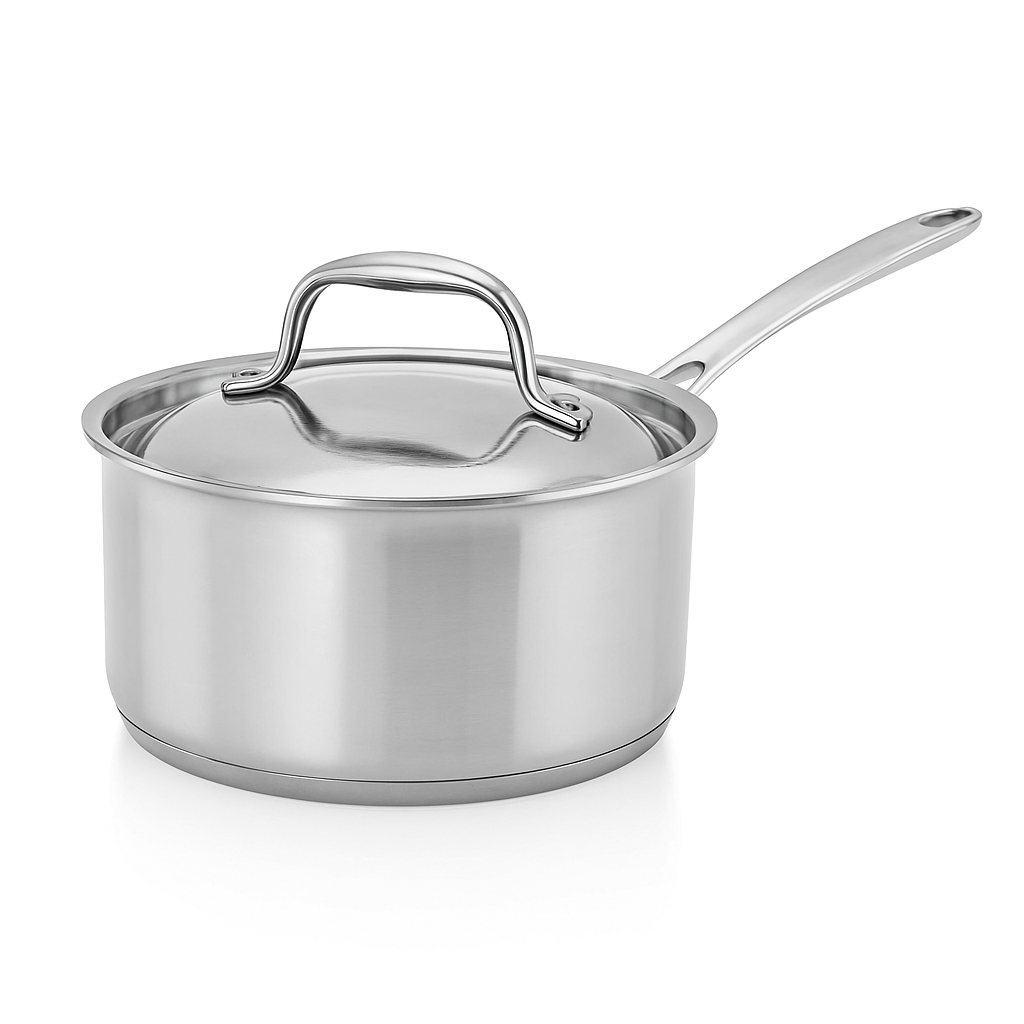

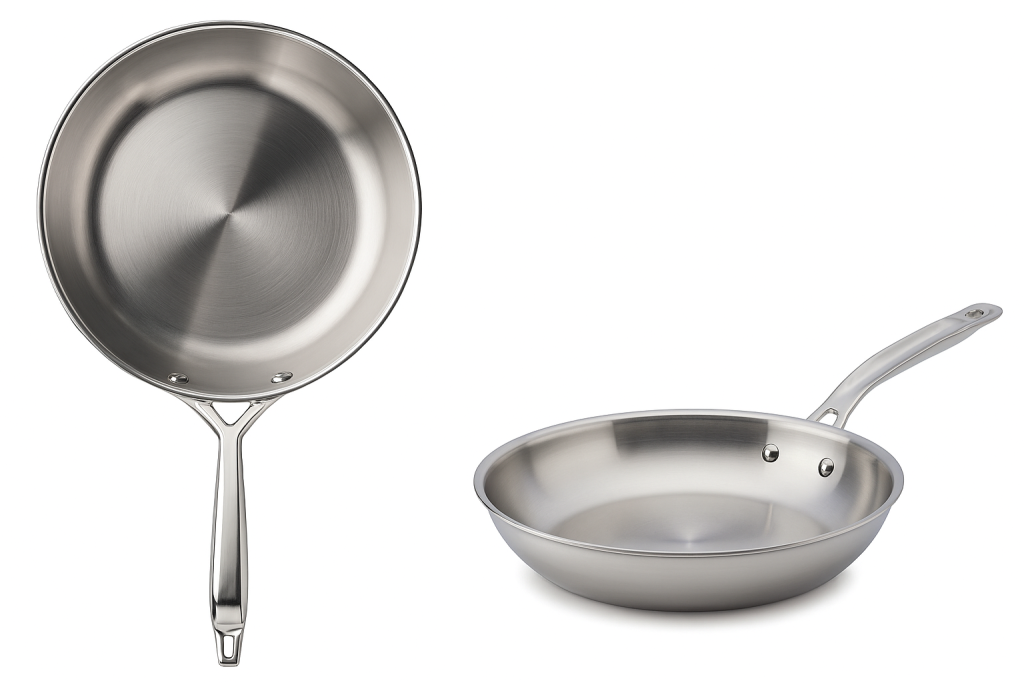

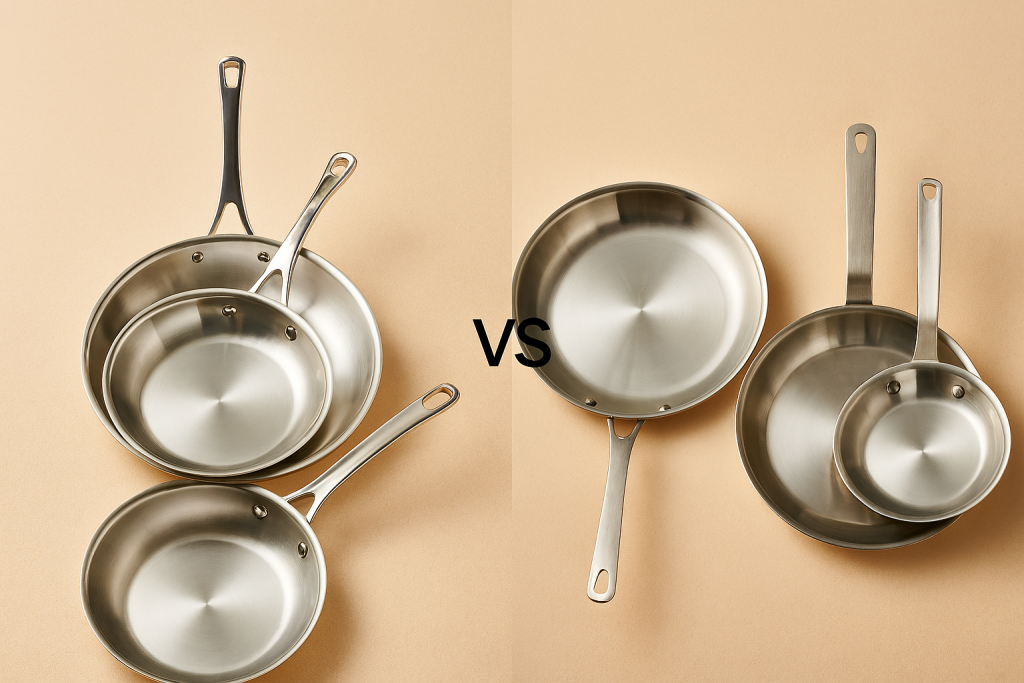
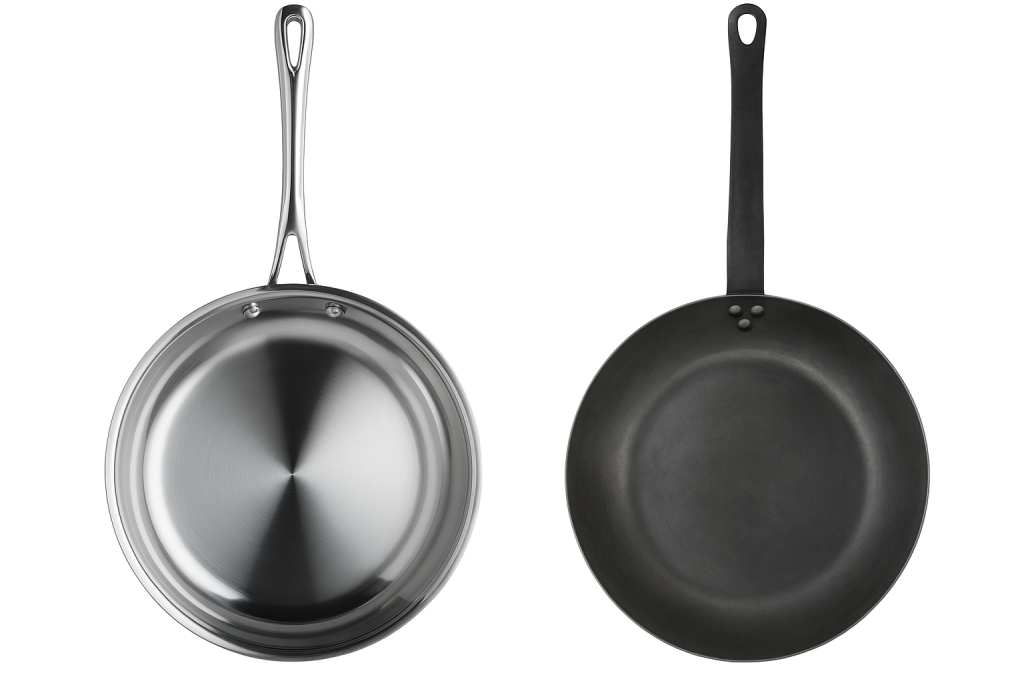
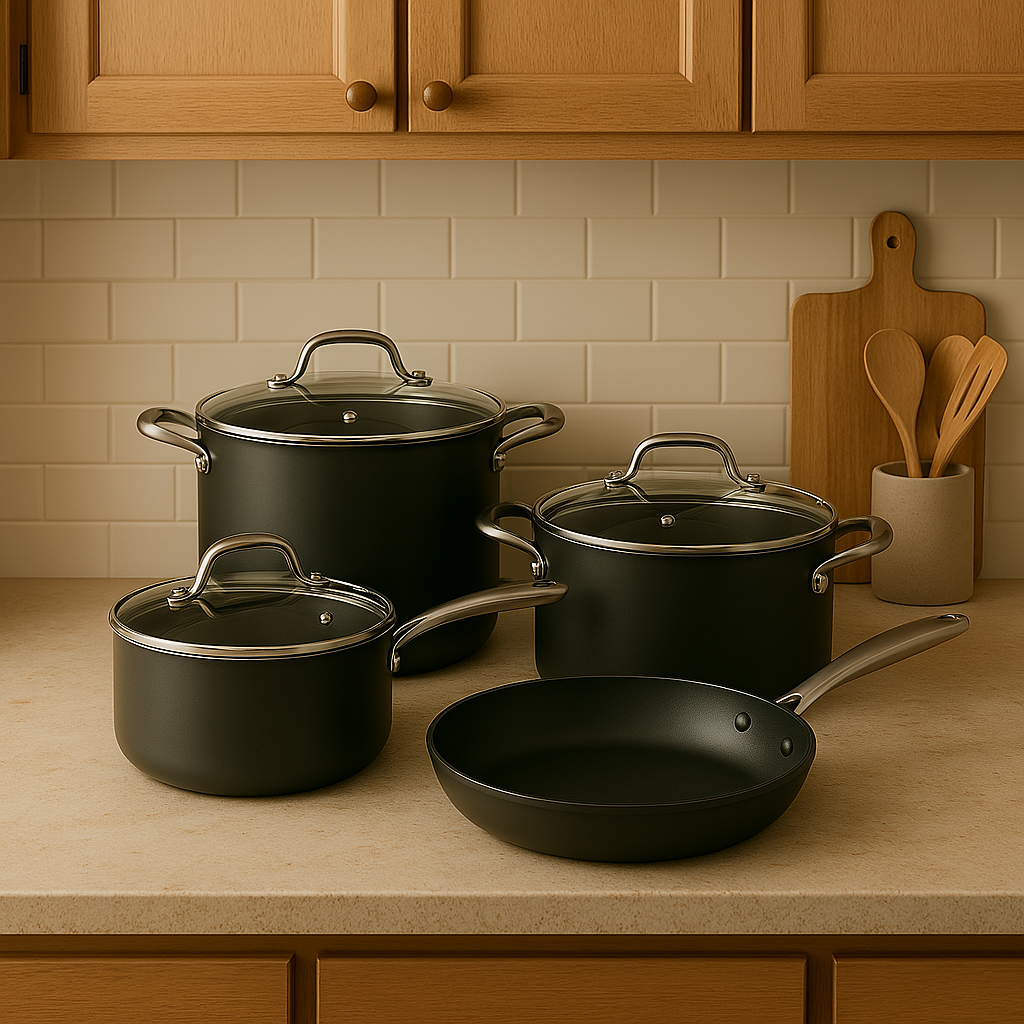
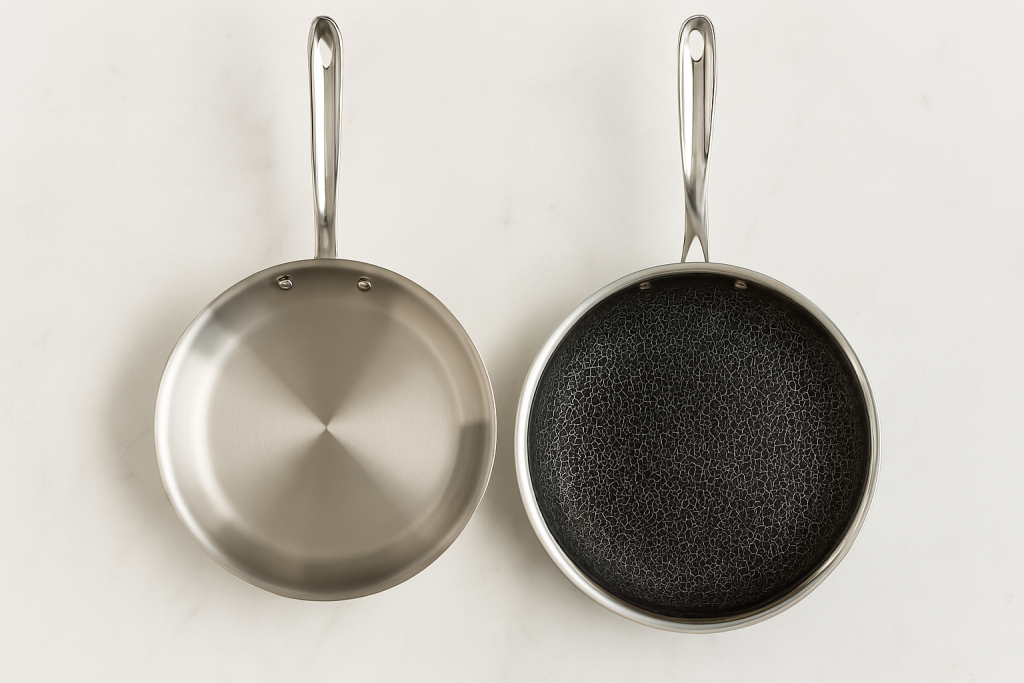
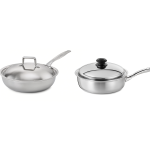
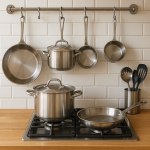
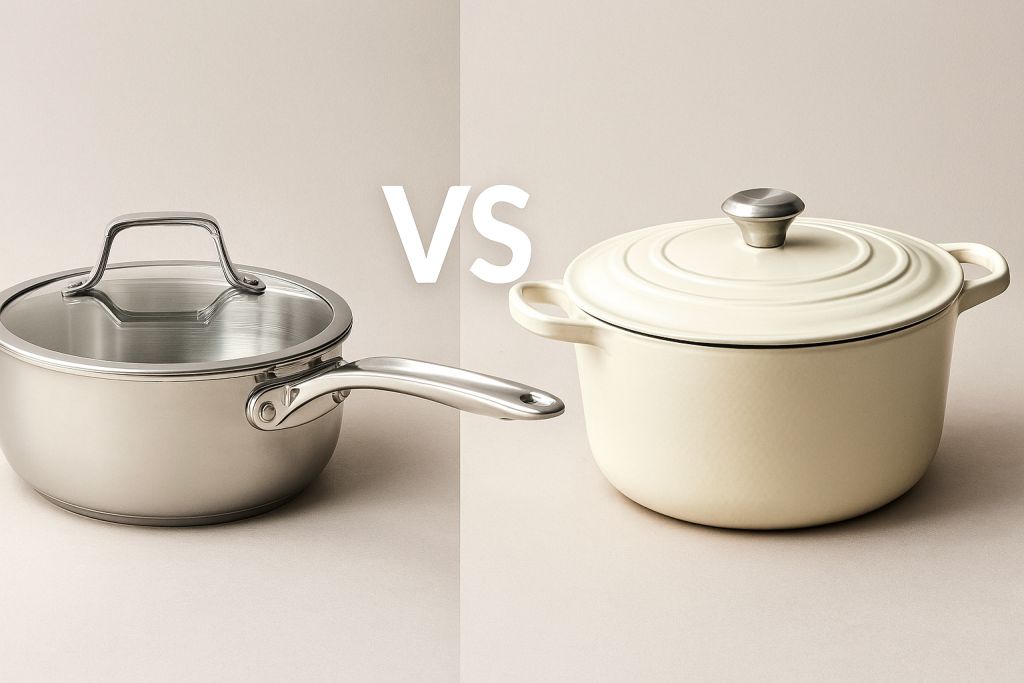

Leave a Reply